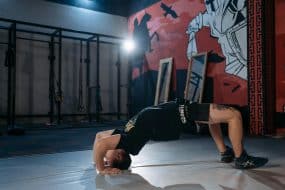
Walking and running are two of the most accessible and popular forms of exercise worldwide. Whether heading out for a casual walk in the park or pushing yourself through a morning run, both activities greatly benefit your overall health. However, things get more nuanced when choosing the best option for your personal fitness goals, especially weight loss.
This blog explores walking vs running, comparing their health impacts, weight loss potential, and suitability for different individuals. By the end, you’ll have a clearer understanding of which is the better fit for you in 2025.
Health Benefits of Walking vs Running
Both walking and running fall under the category of cardiovascular or aerobic exercises. These workouts strengthen the heart, improve circulation, and help your body use oxygen more efficiently.
Cardiovascular Health
Walking and running regularly improves heart health, reduces the risk of high blood pressure, and lowers LDL (bad) cholesterol. This leads to a decreased risk of heart disease and stroke over time.
Mental Health Benefits
Beyond physical health, cardio exercises are excellent for your mental well-being. Studies show that both walking and running reduce symptoms of anxiety and depression, elevate mood, and even boost self-esteem.
Immune System Boost
Staying active supports your immune system by promoting healthy blood flow and reducing inflammation. Moderate exercise, such as brisk walking, also helps the body fight off illness more effectively.
Longevity
Regular cardio activity, whether walking vs running, increases life expectancy. You don’t have to be a marathon runner—consistent, moderate activity is enough to add years to your life.
Weight Loss Compariso

Calories Burned: Walking vs Running
When it comes to burning calories, running generally wins. Running burns about twice as many calories as walking over the same distance. For example, a 160-pound person burns roughly 606 calories per hour running at five mph, while walking at 3.5 mph burns about 314 calories per hour.
Understanding Calorie Deficit
To lose one pound, you must burn approximately 3,500 more calories than you consume. Running helps you achieve that deficit faster, making it more effective for rapid weight loss.
Daily Impact Over Time
However, consistent walking—especially when combined with a healthy diet—can also lead to significant weight loss over time. It’s about sustainability and consistency, not just speed.
When Is Walking Better?
For Beginners or Seniors
Walking is an excellent starting point for those new to fitness or recovering from injury. It’s gentle on the joints and more straightforward to stick with long-term.
For Joint Pain or Injury Recovery
Unlike running, walking is low-impact and less likely to cause joint pain or injury. It’s safer for people with arthritis, knee issues, or previous injuries.
For Low-Impact Fitness
Walking allows you to stay active without putting excessive strain on your muscles and bones. You can walk daily without much risk of overtraining or burnout.
When Is Running Better?
For Faster Fat Loss
If your primary goal is to shed pounds quickly, running offers a more intense workout in a shorter period. It ramps up calorie burn and metabolism.
For Endurance and Cardiovascular Conditioning
Running builds endurance and strengthens the heart more efficiently. It’s a go-to for athletes or those preparing for competitive events.
For Time-Efficient Workouts
Don’t have much time? A 30-minute run burns significantly more calories than a 30-minute walk, making it ideal for those on a tight schedule.
Speed Walking & Power Walking
What It Is
Speed walking involves walking briskly (over three mph), while power walking ranges from 4 to 5 mph. Both elevate your heart rate significantly.
Calories Burned vs. Jogging
Power walking can burn nearly as many calories as slow jogging. Walking at 4.5 mph burns approximately 300–400 calories per hour, depending on your weight.
How to Incorporate It
Use interval training to switch between regular walking and power walking. You’ll increase calorie burn while keeping the workout fun and varied.
Incline Walking vs Running
Using a Treadmill or Hilly Terrain
Walking on an incline—whether outdoors or on a treadmill—boosts the intensity of your workout. It engages your glutes, calves, and hamstrings more than flat walking.
Muscle Engagement and Calorie Impact
Incline walking raises your heart rate and mimics the calorie burn of a slow jog, making it a great alternative for those looking to level up their walking workouts.
Sample 30-Minute Incline Workout
- 5 min warm-up walk on flat ground
- 20 min incline walk (start at 5%, increase gradually to 10–12%)
- 5 min cooldown
Walking with Weights or a Vest
Benefits
Wearing a weighted vest or carrying light dumbbells can increase the intensity of your walk. It helps build strength and burn more calories.
Safety Tips
Ensure the vest doesn’t exceed 10% of your body weight. To prevent strain, avoid overloading your arms or shoulders.
Beginner-Friendly Routine
Start with short walks (15–20 minutes) wearing light weights. Gradually increase time and weight as your strength builds.
Risks and Injury Prevention
High-Impact vs Low-Impact
Running, while effective, is high-impact. It puts more stress on joints and increases the risk of injury compared to walking.
Common Running Injuries
- Shin splints
- Plantar fasciitis
- Stress fractures
- IT band syndrome
How to Stay Safe
- Use proper running shoes
- Warm up and cool down
- Avoid increasing mileage too quickly
- Cross-train with low-impact activities like swimming or cycling
Best Option Based on Your Goals
For General Health
Both walking and running are beneficial. Choose the one you enjoy and can stick with consistently.
For Weight Loss
Running is more efficient for calorie burn. But if walking is more sustainable for you, it can be just as effective in the long term.
For Improving Stamina
Running challenges your cardiovascular system more. However, walking can still improve stamina over time, especially when done briskly or on inclines.
Tips for Getting Started
Walking and Running Apps
Use apps like Strava, Nike Run Club, or MapMyWalk to track your progress and stay motivated.
Building Consistency
Set a realistic goal, such as exercising 30 minutes a day, five times a week. Make it part of your daily routine.
Staying Motivated
Join a walking and running group, listen to podcasts or music, and reward yourself for reaching milestones.
Final Verdict
In the walking vs running debate, there’s no one-size-fits-all answer. Both offer exceptional health benefits and can help you lose weight, boost mental health, and increase longevity. The key is to choose what aligns with your lifestyle and goals.
Walking is your best bet if you’re starting or need a joint-friendly option. Running is the way to go if you’re chasing quick weight loss or looking to push your endurance. Ultimately, the best exercise is the one you enjoy and stick with consistently.
FAQs Section
Can walking help reduce belly fat? Yes. Walking burns calories and helps reduce overall body fat, including stubborn belly fat, especially when combined with a healthy diet.
Is walking 30 minutes a day enough? Absolutely. Walking 30 minutes daily improves cardiovascular health, supports weight management, and elevates mood.
How many calories does a 20-minute run burn? On average, a 20-minute run at six mph burns around 200–300 calories, depending on your weight and running intensity.







